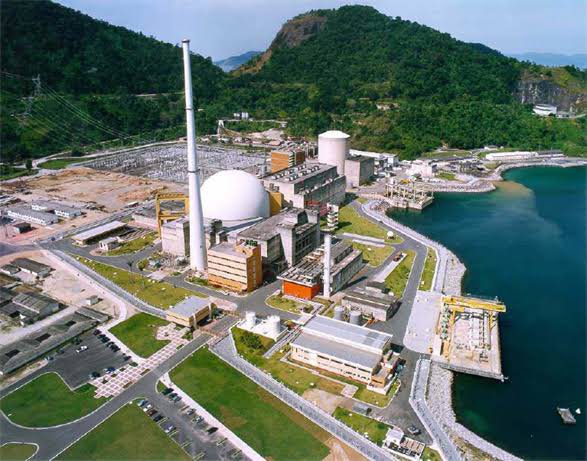Notícias
Brazil and the Electric Energy Research Center's agreement to study new sites for nuclear plants
Published in
Mar 02, 2022 12:11 PM
Updated in
Mar 03, 2022 03:15 PM

The Brazilian govt has signed a cooperation agreement with the Electric Energy Research Center to study new sites for nuclear plants in Brazil. Increasing the share of thermonuclear sources in our energy matrix will reduce the impacts of water crises on electricity generation.
Also, a contract signed for services under the Critical Path Acceleration Plan, which will allow for the resumption of works on the Angra 3 nuclear plant, with the completion of the concrete superstructure of the reactor building and a major part of the electromechanical assembly.
The construction of the first Brazilian nuclear power plant, Angra 1 — which operates with a pressurized water reactor (PWR) and produces up to 657 electric megawatts — began in 1972. Angra 2 generates 1350 megawatts, and Angra 3 is expected to generate 1405 megawatts.
Brazil is privileged to have reserves of several alternative energy sources - uranium, coal, biomass, natural gas and oil - but the Brazilian integrated electrical system is essentially based on hydroelectric power. Such power plants can face hydrological risks.
Even with the increased use of other renewable sources such as wind, solar, and biomass, the need for thermal complementation will remain. All renewable sources depend on nature's cycles and require thermal complementation for periods when they are not fully available.
The relative use of thermal complementation for each will depend on local availability, security of supply, supply logistics, price volatility, and last but not least, on their environmental impact. Thermoelectric plants will be designed to regulate the system.
Angra 1 and 2 are located near the main consumption centers in Brazil, which provides stability to the interconnected system. The energy generated by both plants is equivalent to about 40% of consumption in the state of Rio de Janeiro and almost 3% of national consumption.
Brazil has completely mastered nuclear fuel’s manufacturing cycle , and has one of the world's largest uranium reserves. Since it will not be subject to fluctuations in the international market, the risk of supply vulnerabilities and price volatility is further diminished.
The Angra nuclear plants operate in relatively small areas, do not release greenhouse gases, and all their waste is kept in facilities under permanent monitoring. Comparatively, nuclear plants generate electricity in large scale with the least impact on the environment.